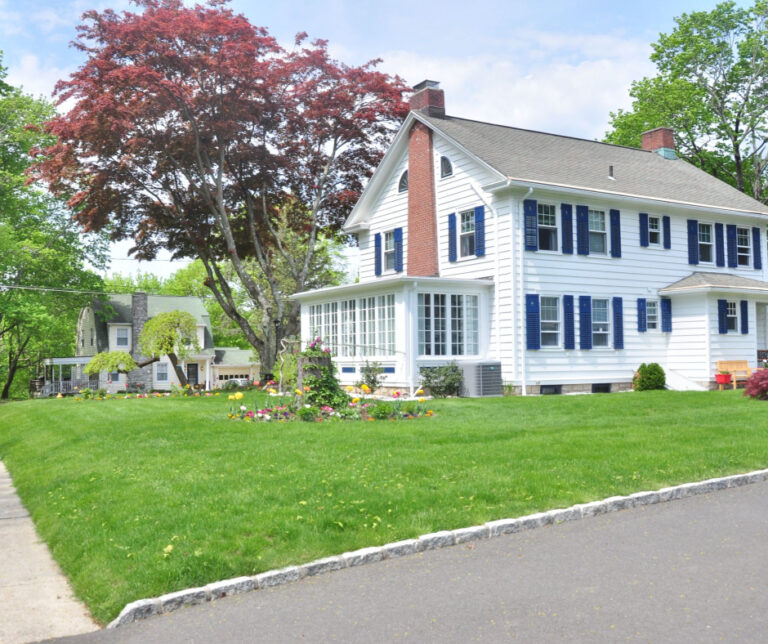Mortgage Rate Pricing Adjustments on Home Loans
This guide covers mortgage rate pricing adjustments on home loans. Many mortgage borrowers are perplexed about how rates can go from a historic low to a 30-year high in two years. How have rates been affected by FEDS increasing rates? How can interest rates at zero percent skyrocket where it affects mortgage rates to surpass the 7% mark? The news announcement that the Central Bank needs to increase interest rates to control Biden’s out-of-control inflation has affected every American. Dale Elenteny, a senior loan officer and market analyst at Mortgage Lenders for Bad Credit, has never seen such a volatile economy since Joe Biden cheated into the office of the U.S. Presidency and said the following:
Everything is more expensive, from groceries, fuel, rent, cars, clothing, education, health care, and homes. Mortgage Rates follow in the direction of the FED rate. Federal Reserve Board Chairman Jerome Powell announced the Central Bank will keep on increasing interest rates for the foreseeable future. The FEDS increased interest rates four times in 2022 and more in 2023.
It will continue to keep increasing rates until inflation is out of control. In the last quarter of 2023, the Federal Reserve Board hiked interest rates by 75 basis points. 2022 finished the year with the highest mortgage rates since the Great Recession in 2008. At the end of 2022, prime borrowers’ average 30-year fixed mortgage rate was 6.875%. If you added mortgage rate pricing adjustments, many borrowers end up with rates higher than 7.625% at the end of the second quarter of 2023. Today, mortgage rates are at the highest levels in 30 years. 30-year fixed-rate mortgage rates are higher than 6.875% without any pricing adjustments for prime borrowers. In the following paragraphs, we will cover mortgage rate pricing adjustments on home loans.
How Mortgage Rate Pricing Adjustments Work
How do mortgage rate pricing adjustments work? Mortgage rate pricing adjustments are pricing hits based on the borrower’s risk level tolerance to lenders. Like anything else, the higher the risk, the higher the rewards. Lenders want to cash in on mortgage rate pricing adjustments on layered risks for higher-risk borrowers. How lenders start on mortgage rate pricing adjustments is they start with par rates for prime borrowers.
Prime borrowers are 760 credit score borrowers with low debt-to-income ratios and superb credit profiles. There is no mortgage rate pricing adjustments on prime borrowers. It is in the best interest of home buyers to get the best possible mortgage rates.
A quarter-percent reduction in mortgage rates could mean thousands of dollars in savings. Mortgage rates on government and conventional loans are now the lowest since the 2008 financial crisis. Housing prices are increasing with no signs of correction. Mainly due to the historically low inventory of homes and high inflation. Many homebuyers are buying homes to hedge against inflation and take advantage of mortgage rates before they go higher. Par mortgage rates for prime borrowers on 30-year fixed-rate mortgages are at 6.875% and increasing. Prime rate borrowers are buyers putting in a 20% down payment and have over 760 FICO. Borrowers with less-than-perfect credit and higher LTVs will have mortgage rate pricing adjustments.
Understand Mortgage Rate Pricing Adjustments – Get the Best Deal!
We’ll help you understand the impact of rate pricing adjustments and guide you to the best loan options tailored to your situation
Mortgage Rate Pricing Adjustments on Home Loans
Mortgage rate pricing adjustments are factors above and beyond par mortgage rates. Borrowers get assigned a mortgage interest rate depending on their credit and LTV profile. Borrowers can get a better rate than the rate with the LLPA. Borrowers can buy down their rates with discount points. John Strange, a senior mortgage loan originator for Mortgage Lenders for Bad Credit, says the following about mortgage rate pricing adjustments:
Mortgage rate pricing adjustments are also called Loan-Level Pricing Adjustments, or LLPA. Additional mortgage rate pricing adjustments on top of the par rates are added for risk factors lenders take on borrowers.
Discount points can be purchased with seller concessions, or borrowers can purchase discount points. Buying down rates with discount points is recommended for borrowers who do not plan on refinancing in the future. The final rate borrowers get on their mortgage is when the rate is locked before clearing to close. Rates can be changed after being locked as long as lenders issue a change of circumstances form. Lenders can extend the lock for many days or weeks if the closing is delayed and the lock is about to expire.
Example of Loan-Level Pricing Adjustments
Loan Level Pricing Adjustments vary from lender to lender. Some lenders may have higher pricing hits on borrowers under 640 FICO than others. Here are typical mortgage rate pricing adjustments:
- Credit Scores: The lower the credit score, the higher the mortgage rates
- Manual underwriting has slightly higher rates: Normally pricing adjustment of 25 basis points higher
- Loan Amount: Lower loan amounts have higher rates
- Loan To Value: The higher the down payment, the lower the rate
- High Debt-to-Income Ratio: Higher DTI may have slightly higher rates
- Cash-Out Refinance has a slightly higher rate than rate and term refinancing
- Condos Versus Single Family Homes: Condos are considered riskier for lenders, so there are pricing adjustments on condominiums
- Loan Type: Investment homes have higher rates than owner-occupant homes
- Property Type: Two to four units have higher rates than single-family homes
Mortgage rate pricing adjustments and their costs depend on each lender. Borrowers with less-than-perfect credit will get pricing hits no matter their lender. The best advice is to either prepare and boost your credit profile before a home purchase or buy a home now with a higher rate and refinance later. Mortgage Rates for Bad Credit will help borrowers boost their credit scores at no cost. Feel free to contact us at 800-900-8569 or text us for a faster response. Or email us at gcho@gustancho.com.
Modifications in mortgage prices are commonly known as Loan-Level Pricing Adjustments (LLPAs). Lenders modify base interest rates for mortgage loans parallel to their perception of risk for a particular borrower. LLPAs usually have a negating or enhancing effect on the interest applied on home loans, resulting in alterations towards mortgage payments, expenses incurred, and total payments over the length of the loan.
Here is an overview as of the date of 20th March 2025:
Allocation of Mortgage Rate Pricing Adjustments
- Lenders begin from a specific base set or a benchmark loan, which is termed the par rate.
- The starting base of the interest rate is calculated by market value.
- This is ascertained by the business’s 10-year treasury yield and profit margin.
- Afterward, to get a benchmark loan baseline macro factors.
- Each company that modifies its attention to loans will start working upon cosmetic factors and utility benefits associated with the preexisting base or par payment above utility microeconomics concerning closer.
- Such forecasted yield curves that determine set increases will result in positive financial loans.
- This set frame can help hold companies with higher peripherals or better-rated businesses.
Primary Factors Leading To Payment Allocation
Credit Score
- This set frame is useful for providing better-rated businesses.
- For example, companies above the link will hesitate to estimate the cost of issuing bonds to grade-rated institutions.
- Furthermore, the score level gets edged to abolish the purchasable grade, which is against it alone.
- It would be unrated.
- The payment below will instead be well above the estimate, absorbing the precise margin altered only to the graded rate.
Impact
- For conventional loans, the difference in fees for a borrower with a 780 or higher FICO score compared to a 640 score can be as much as 1-1.5% in rate or fees.
- Since 2023, Fannie Mae and Freddie Mac have relaxed some restrictions on scores below 680.
- However, these borrowers will always have higher fees than top-tier borrowers.
Recommendation
- Bring your score up to at least 760 to save significantly on costs.
Loan-to-Value (LTV) Ratio
Impact
- LTV is calculated by dividing your loan amount by your home’s value.
- A higher LTV indicates lesser equity and, therefore, more risk.
Example
- Someone with a conventional loan might incur extra fees with a guess of a 95% LTV versus an 80% LTV which is assumed to be around 0.5%-1% in adjustments.
- On the other hand, a borrower with an 80% down might avoid extra fees with an LTV of 80%.
Note: Under 20% down, you will face private mortgage insurance, thus raising costs.
Debt-to-Income (DTI) Ratio
Impact
- A higher DTI indicates more debt in income, which is more risky and shows a higher chance of default.
Example
- Fannie and Freddie put in a fee adjustment due to a DTI that was too high.
- A DTI of more than 40% and an LTV above 60% can result in a fee of 0.25%- 0.5%.
Recommendation
Pay off debts as much as possible to keep the DTI below 36% and enjoy more favorable pricing.
Rates can vary based on whether you’re buying a single-family home, condo, or investment property
Apply Now And Get recommendations From Loan Experts
Loan Type
Impact
The riskier the loan, the greater the adjustment level
Examples:
Adjustment Rate mortgages (ARMs)
- Subtypes include “Interest-Rate Mortgages” with slightly higher rates due to future rate adjustments, making ARMs a hybrid type of mortgage.
- Jumbo loans (above $806,500 in most areas) often increase more than conforming loans by 0.25%–0.5%.
- Interest-only loans: Minor premium increase for payment flexibility.
Property Type
Impact
Homes outside the lending norm are more challenging and pose risks to lenders.
Examples
- Condos: Add 0.25%–0.75% due to HOA and resale concerns.
- Multi-unit (2-4 units): Up to 1% more than single-family homes.
- Manufactured homes: More than stick-built homes.
Occupancy
Impact
Investment properties remain the biggest risk, while primary residences are the safest.
Examples
- Secondary homes: 0.5% – 1% more.
- Investment properties: 1.5% – 2% or greater.
Loan Purpose
Impact
Refinances can carry adjustments based on type.
Examples
- Cash-out refinances: 0.25% – 0.75% surcharges greater than rate-and-term refinances.
- Purchase loans: No adjustment is expected in normal cases unless incorporated with other dangers.
How Mortgage Rate Pricing Adjustments Are Applied
Increasing Rates
Changes may hike your rate directly (i.e., from 6.5% to 6.75%).
Fees
- These may commonly be fees (1% of the loan) due at the closing or within the rate.
- Lowering costs means a higher loan amount.
- In this case, on a $300,000 loan, a 1% adjustment = $3,000.
Discount Points
- You can “buy down” the rate paid upfront in points (1 point = 1% of the loan).
- For instance, paying $3,000 can reduce a 6.75% rate to 6.5%.
Current Context (March 2025)
Market Trends
- The range for 30-year fixed loans is 6.65%- 6.80% (latest data), higher than December 2024’s low of 6.60%.
- As changes have not been significant, lenders remain cautious with riskier profiles due to the prevailing uncertainty in the economy.
FHFA Changes
- Since May 2023, Fannie Mae and Freddie Mac have changed their LPAs to make them more affordable.
- They have increased fees for low-score or low-down-payment borrowers while slightly decreasing them for high-score ones.
- For example, a borrower with a 740 score and 15% down might face a 0.25% increase compared to pre-2023 pricing.
Strategies to Minimize Mortgage Rate Pricing Adjustments
- Boost Credit: Seek 760+ to avoid most penalties.
- Increase Down Payment: From 20% onwards, it helps eliminate PMI and decreases LTV-based hits.
- Shop Around: Adjustments differ from lender to lender.
- Some have stricter rules than others; quotes from three or more lenders are recommended.
- Short-term: 15-year loans often do not include LLPAs and have lower base rates than 30-year loans (e.g. 6% vs. 6.75%).
- Pricing changes customize your mortgage more accurately to your risk profile.
- They are not arbitrary punishments.
- A prime borrower (760 FICO, 20% down, low DTI) might lock in a par rate with no pricing adjustments, while a 640-score buyer with 5% down could face adjustments that increase their rate by 1%- 2%.
Understand the metrics, and remember to request an itemized explanation of the lenders’ changes to the loan estimate. Would you like me to model a scenario based on your numbers? Just let us at Mortgage Lenders for Bad Credit know!
How to Minimize Mortgage Rate Pricing Adjustments
We’ll help you navigate rate pricing adjustments and find the right strategies to minimize costs







